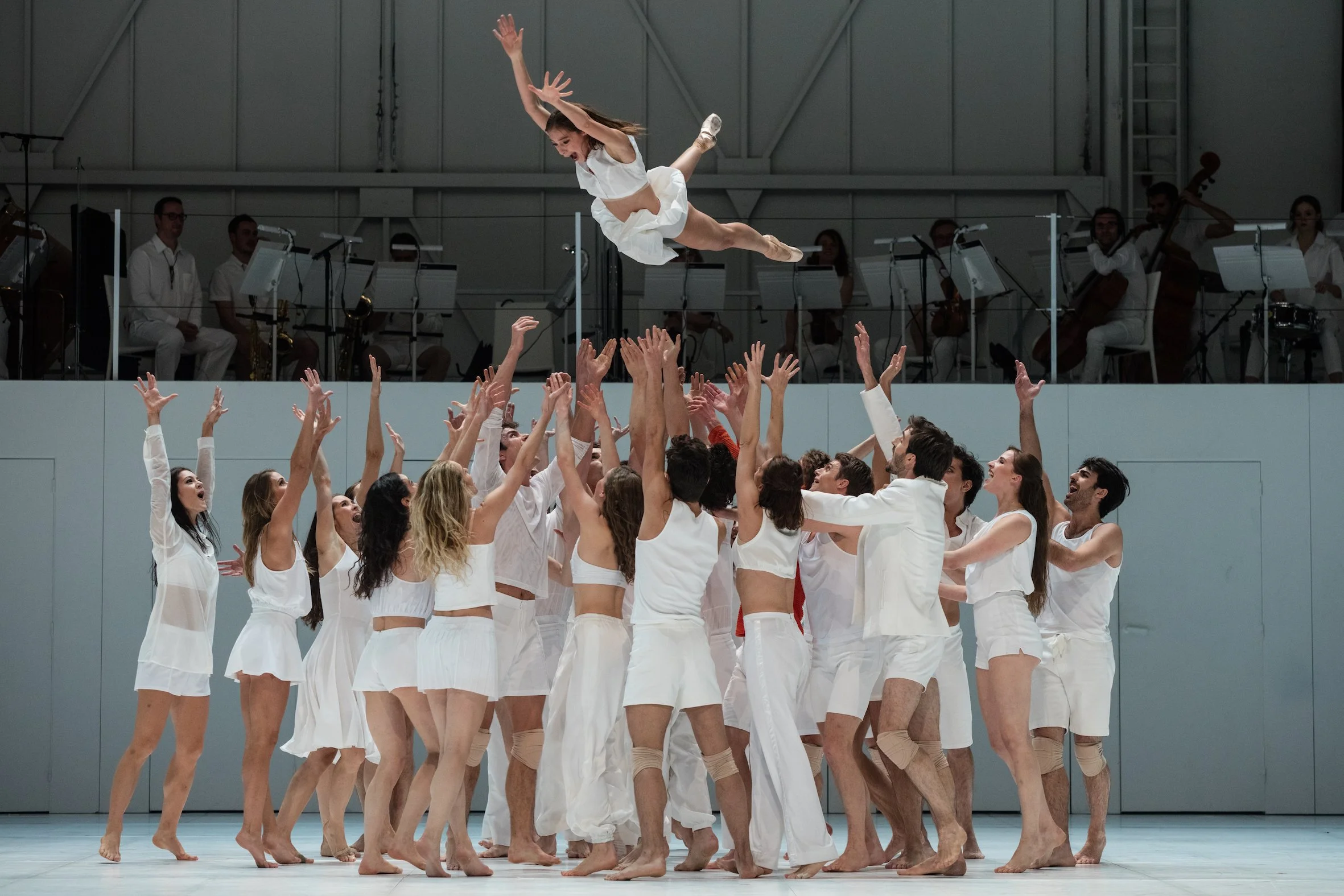Dance review: Alexander Ekman's Play proves to be a gorgeous delight
Created for the Paris Opera Ballet, the work is having its Canadian streaming premiere
Play. Photo by Ann Ray/Opéra national de Paris
DanceHouse in partnership with Digidance presents Play, streaming on demand to November 27
THINK OF A ball pit, the kind of kids’ area that IKEA has in its stores. The Palais Garnier in Paris—a historical monument built in 1875 with a ceiling painted in 1964 by Marc Chagall—is the last place you’d ever expect to find those plastic balls, certainly not by the tens of thousands, all of them the colour of green grass, and definitely not being tossed around and jumped into by the lithe, classically trained artists of Paris Opera Ballet.
Thirty-six dancers swoosh and slide through some 40,000 balls in parts of Play by Swedish choreographer and dance wunderkind Alexander Ekman. When it opened in Paris in 2017, the show ran for 25 dates, each one of which sold out. Because of its wild success, it was recorded for the screen, with DanceHouse and Digidance now presenting its streaming Canadian premiere.
Play journeys through a lifetime, creating so many moods along the way. Early on, gleeful, smiling dancers dressed all in white to match the bright, open set frolic: they pretend to be different animals and imitate a games leader in clapping their hands and stomping their feet. The characters become much more serious as working adults with office jobs in conservative dark-grey clothes, their movements more restrained. Later, a kind of candle-lit vigil amid the darkened stage fills that storied theatre with a sense of calm. The piece is punctuated by outbursts of frivolity throughout. It all suggests that people generally forget to play as they grow up—but oh, how fun it is, and something they might want to do more often when reminded of the fleetingness of life.
Watching Play is pure joy, and the part with those plastic green balls—which rain down from the rafters—is just one highlight. In that extended section, the objects become part of the choreography: dancers hurl and kick them, tumble into them, and pirouette among them as the orbs bounce and roll every which way. A lone character, a woman who comes across as a very unfun CEO throughout the entire piece, makes a futile attempt to collect some of the balls to put in a big plastic garbage bag.
The balls also become part of the score at times when gospel singer Calesta Callie Day and the 11-piece band—positioned at the back of the stage on a raised platform—are silent. As a dozen male dancers in dark suits navigate a knee-deep sea of green, for instance, the sounds of the balls being rhythmically shoved aside with their legs fill the theatre.
Sound plays an interesting role elsewhere in the piece. While ballet dancers’ pointe shoes are typically meant to be silent, the opposite is occasionally the case here. In one scene, more than a dozen female performers—beguiling horned creatures in helmets adored with sticks—slap the top of their feet behind them on the floor. Elsewhere, the steps of a tutu-wearing ballerina travelling across a series of big blocks are mirrored by a pal facing her, who pounds a microphone into the block he sits atop.
Whether they’re executing grand jetés or tumbling across the floor, the dancers—some of the best in the world—mesmerize every second. If there’s one downside to the recording, it’s that viewers barely get to see the multipiece band (which includes piano, violin, violoncello, alto, contrabass, saxophone, percussion, and more) performing Swedish composer Mikael Karlsson’s fantastic score, by turns frantic, soulful, meditative, and frisky.
Cartwheels, pillow fights, wheelbarrow rides, and giant balloons that soar into the audience for viewers to pass around: Play is a gorgeous delight—and a good reminder to get away from your desk more often.














